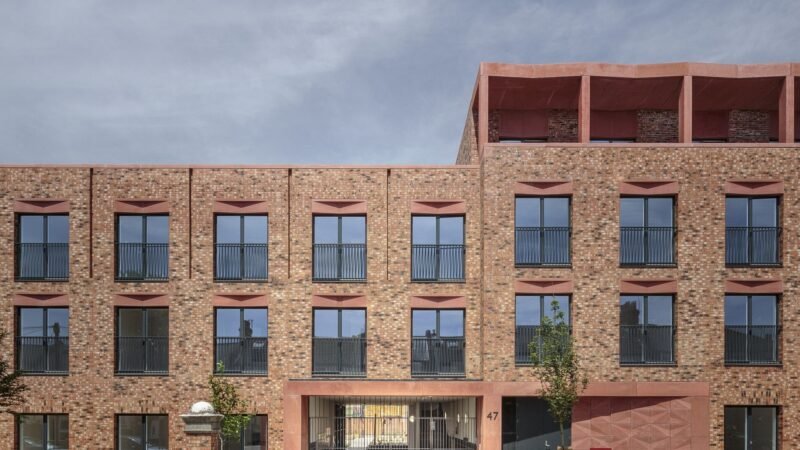Small Living In The Big City
To those who only look at shared housing and small living spaces as a lifestyle that students choose out of economic reasons, micro-metropolitan living is a trend, which is born out of more than just the pure need for cheap accommodation.
Shortlisted for the WAN Future Projects Residential Awards in 2016, Amsterdam-based architects Jay Tsai and Ryszard Rychlicki, created the so-called Tiny Homes, merging the need of cheap student housing with a simple community-oriented approach.
While most of the buildings in high-end architecture are built for wealthy clients, Tsai especially wanted to create buildings that would be accessible for the less prosperous as well. Inspired by Japanese architecture, known to create great and simple buildings for people with any kind of income, Jay created a simple model of one housing unit with a slanted roof, mostly made out of plywood and polycarbonate. The units were subsequently rotated and put on a cross-shaped floor plan to form one big residential unit with an intimate, larger shared area in the middle.

Communal Spaces
The American architect sees himself as a very social person, who is interested in the minimalistic lifestyle himself. Living in Amsterdam and working at architectural office UN Studio, Tsai lives according to the principle of “get rid of whatever you don’t need.” It is then no surprise that his Tiny Homes are designed according to that principle as well. Creating tertiary spaces on the outside and communal spaces on the inside, the Tiny Homes housing complex is mostly catered to students living there for a couple of years. The different units, which are facing each other, create a communal space on the inside. Further equipped with a bike storage, a small laundry section and a communal workspace, the Tiny Homes provide pretty much anything students need in this particular period in time, according to Jay. Once finished with their studies, they could rotate out of the homes and make space for new students.

If the project were to be realised, it would be in Chicago, in a low income area of the city, which is currently very underdeveloped. The project is specific to that very site, but according to Jay, it could pretty much work anywhere. The homelessness in the US is a big issue, and even though Tsai’s Tiny Homes are not specifically made for homeless people, it is his own approach to tackling the housing problem that manifests itself specifically in lower income groups.

Towards ‘Less is More’
“Every time I see compact living, it’s always paired with a high price tag, it just doesn’t make any sense,” finds Jay. New developments in student housing are already showing a trend towards minimalism and sharing facilities with a bunch of other people. Everything folds out, you share a lot of space with other people — but the price is often not justified and affordable to students or people with a lower income. “There needs to be some sort of regulation,” says Jay, and gentrification is not helping it. It pushes people further out and stands in the way of opening urban housing to everyone.

The Tiny Homes are Jay’s attempt to let people see that they don’t need to live so large to be happy. Looking at Japan, and seeing that they have always made tiny homes work somehow, there is a lot that the United States can learn from a different lifestyle. The sprawl and tendency towards big suburban houses that one can see in the United States is a needless waste of space according to Jay. He also would like to see the trend towards micro-metropolitan living as here to stay, but first people need to realize something very important: “Everything beyond a certain amount of income is just a matter of access, and additional ownership does not make you happy per se.”

Would he like to see something similar to his Tiny Homes in Amsterdam? “Yes, of course,” Jay tells us. “However, the most suitable location would probably be somewhere in Northern Amsterdam, where the density of housing is still less than in other parts of the city.” Even though his project has not been realised, it helps us to imagine what a future in micro-metropolitan living could be like, and that it is not necessarily paired with high costs. We just need to open ourselves up to new conceptions of what a home is and what it means to us and the community.



